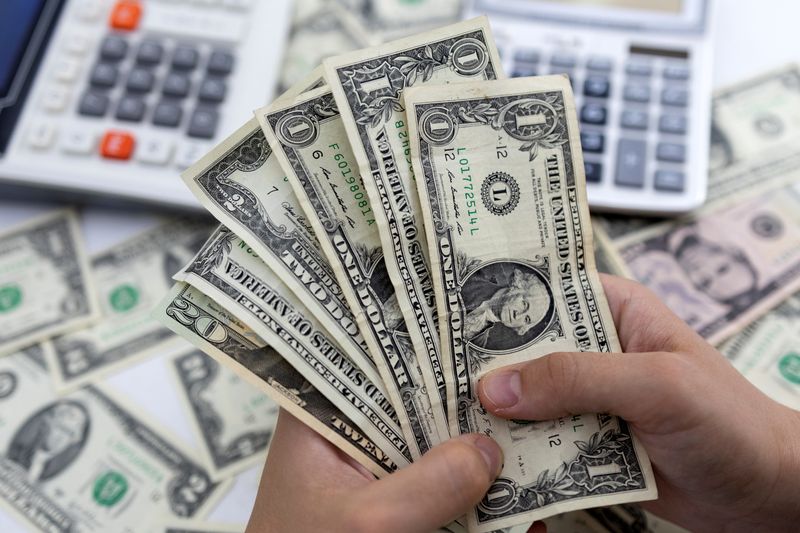Forex
Dollar set for first monthly drop after US inflation readout

By Hannah Lang
NEW YORK (Reuters) -The dollar was lower on Friday and on track for its first monthly decline in 2024 after data showed U.S. inflation rose in line with expectations in April, offering little clarity on how soon the U.S. Federal Reserve will be able to cut interest rates.
The personal consumption expenditures (PCE) price index increased 0.3% last month, the Commerce Department’s Bureau of Economic Analysis said on Friday, matching the unrevised gain in March.
“These numbers do not give any sense that the Fed is achieving its goal,” said Joseph Trevisani, senior analyst at FX Street. “It’s already stated what its goal is, so the markets are willing to give it some time … but that time I do not think is unlimited.”
The was last down 0.12% at 104.64.
The Fed has raised borrowing costs by 525 basis points since March 2022 in a bid to cool demand across the economy. Financial markets initially expected the first rate cut to come in March, but it then got pushed to June and now to September.
Official data showed on Thursday the U.S. economy grew at an annualized rate of 1.3% from January through March, down from the previous estimate of 1.6% after downward revisions to consumer spending.
Although inflation is “moving in the right direction,” said Kyle Chapman, FX markets analyst at Ballinger Group, “policymakers are definitely not out of the woods yet.”
“I would caution against over-interpreting a single month’s data,” he said.
EURO ZONE INFLATION
The euro edged up after data showed price pressures in the euro zone accelerated faster than expected in May, complicating the outlook for the European Central Bank.
The euro was up 0.13% to $1.0847. French inflation data released earlier on Friday, and German and Spanish figures earlier this week, came in slightly higher than expected.
The numbers have not altered the view in markets that the ECB will cut rates when it meets next week.
According to all 82 economists polled by Reuters, an ECB rate cut on June 6 appears certain, with a majority predicting further reductions in September and December.
Elsewhere, the yen weakened, leaving the dollar up 0.24% at 157.210 but off this week’s four-week high, as Japan’s finance minister repeated warnings about excessive currency volatility.
Japan’s Ministry of Finance released data on Friday confirming that Japanese authorities spent 9.79 trillion yen ($62.2 billion) intervening in the foreign exchange market to support the yen over the past month, in moves that kept the currency from testing new lows but are unlikely to reverse a longer-term decline.

“The intervention disclosed by the Ministry of Finance between April 26 and (Thursday) was slightly larger than market estimates derived from the Bank of Japan’s accounts, but isn’t big enough to trigger fears of a war chest so diminished as to limit further action,” Karl Schamotta, chief market strategist at Corpay, said in a note.
Data on Friday showed core consumer inflation in Tokyo accelerated in May, but price growth excluding the effect of fuel eased, heightening uncertainty over the timing of the Bank of Japan’s next rate hike.

 Forex3 years ago
Forex3 years agoForex Today: the dollar is gaining strength amid gloomy sentiment at the start of the Fed’s week

 Forex3 years ago
Forex3 years agoUnbiased review of Pocket Option broker

 Forex3 years ago
Forex3 years agoDollar to pound sterling exchange rate today: Pound plummeted to its lowest since 1985

 Forex3 years ago
Forex3 years agoHow is the Australian dollar doing today?

 Cryptocurrency3 years ago
Cryptocurrency3 years agoWhat happened in the crypto market – current events today

 World3 years ago
World3 years agoWhy are modern video games an art form?

 Commodities3 years ago
Commodities3 years agoCopper continues to fall in price on expectations of lower demand in China

 Economy3 years ago
Economy3 years agoCrude oil tankers double in price due to EU anti-Russian sanctions


























